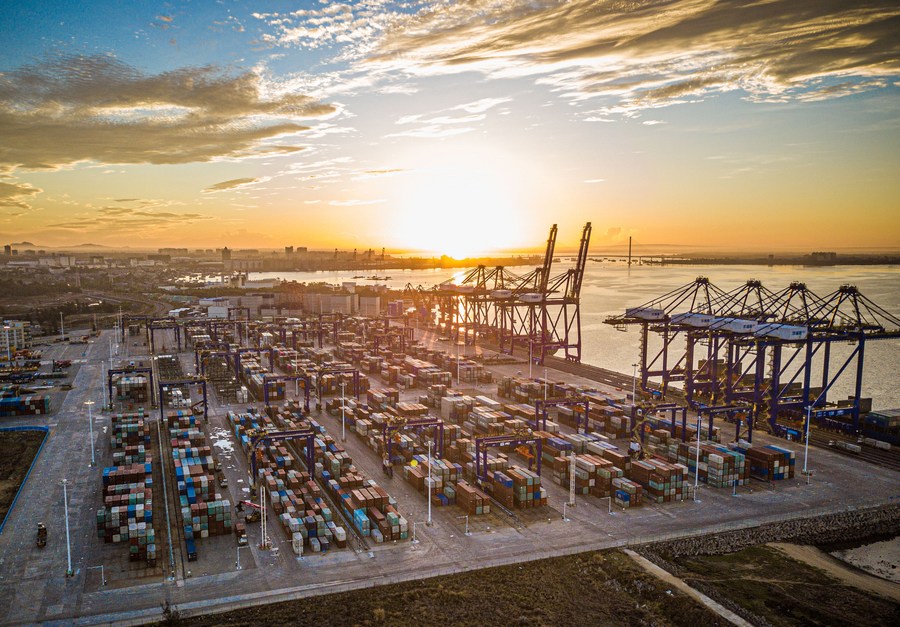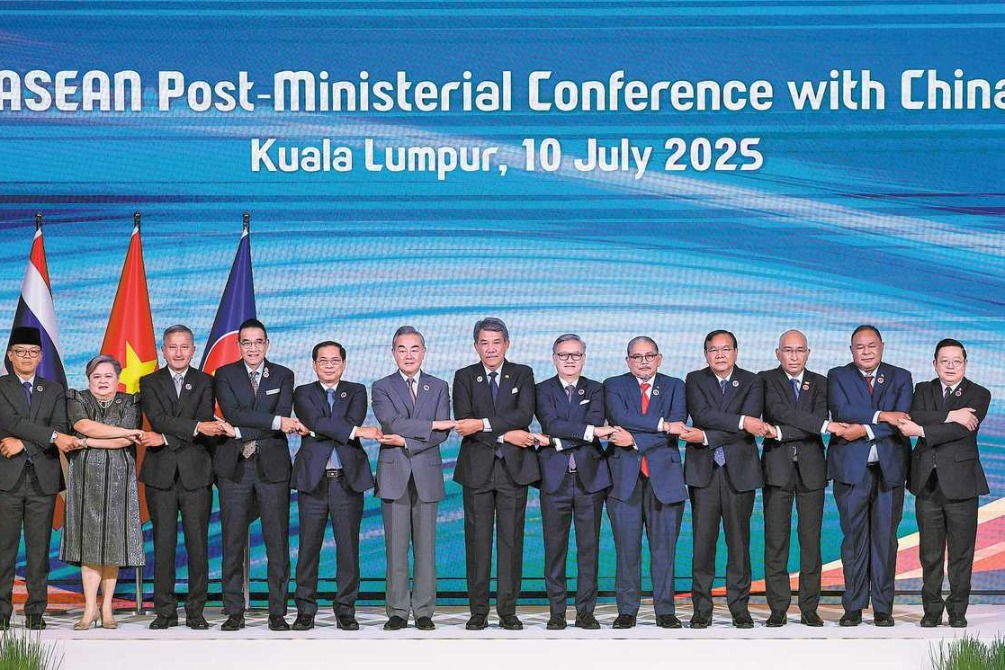Asian economy back on track


Trade pacts, with China at the center, will help region become new focus
Despite international trade being hampered in recent years, economic integration in Asia is developing with China at the center, according to analysts.
Sourabh Gupta, senior fellow at the Institute for China-America Studies in Washington, said establishing important trade agreements contributes much to Asia's recoupling.
"Asia, and the Indo-Pacific or Asia-Pacific, is going forward aggressively with trade agreements, like RECP and CPTPP. We have more players wanting to join CPTPP now. And the barriers to locating an Asia-wide supply chain are getting much lower, which means Asia has become a seamlessly integrated supply chain from a production standpoint. And so, this obviously has the effect of recoupling Asia," he said.
As the world's largest free trade pact, the Regional Comprehensive Economic Partnership came into force in January, bringing together the 10 ASEAN countries alongside China, Australia, New Zealand, Japan and South Korea.
A December report by the United Nations Conference on Trade and Development projected that tariff concessions in the deal would boost intra-Asia exports by approximately $42 billion, nearly 2 percent more from 2019 levels.
"RCEP is set to become the world's largest trading bloc and thus a new center of gravity for global trade. Indeed, RCEP's tariff concessions are expected to further boost trade within the newly formed partnership not only by creating trade within the bloc, but more so by diverting trade from outside the region," the report said.
The Comprehensive and Progressive Agreement for Trans-Pacific Partnership, which emerged after former US president Donald Trump withdrew the country from the Trans-Pacific Partnership in 2017, was signed in March 2018 and it went into force in December that year. China submitted a formal application to join the CPTPP in September 2021.
During a webinar hosted by the Center for Strategic and International Studies on June 27, Tu Xinquan, a professor at the University of International Business and Economics in Beijing, said the CPTPP is the "most convenient approach" for China to participate in regional integration.
"It is also difficult for China to meet all the rules in CPTPP in a short time, but China has taken some concrete steps," Tu said.
Important role
Rita Rudnik, an author for the Paulson Institute's think tank MacroPolo, said in her article, titled Supply Chain Diversification in Asia: Quitting China Is Hard, that China's overall manufacturing levels remained consistently high despite the "endless headlines about supply chain diversification and reshoring".
"Apple's reliance on the Asian manufacturing ecosystem, and specifically China, is well known. Thus, the company's decisions can serve as a leading indicator of electronics supply chain movements," she wrote.
"Delving further into these suppliers, many of the sites Apple removed from China were specializing in labor-intensive work such as packaging and metal production. At the same time, Apple added 14 new Chinese suppliers to its roster in 2021, many of which were higher value, knowledge-intensive manufacturers of intermediate goods like optical components, sensors, and connectors."
Gupta said another factor promoting the recoupling is consumption localization, in which China has played an important role.
"China has been this great producer economy, but now China is also pivoting to becoming a consumer economy. And what is going to happen is that many of these are supply chain-produced goods in Asia and then consumed in Asia by China. They don't only go out in certainty to Europe or America, but are also consumed within the region," Gupta said.
"I think China's role in supply chains is just going to be enhanced and increased over the next couple of years."































